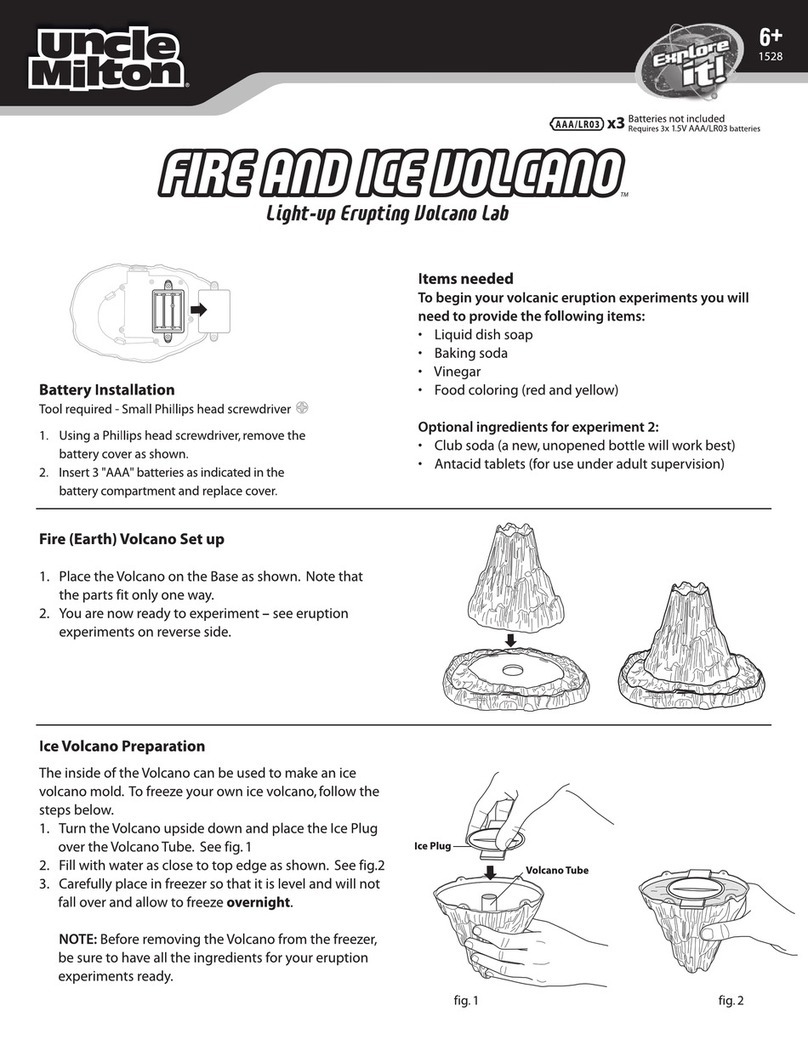ECLIPTIC
ECLIPTIC
LEO CANCER GEMINI
AURIGA PERSEUS
CANIS MINOR
CANIS MINOR
ORION
LEPUS ERIDANUS CETUS
TAURUS
ARIES
PISCES
ANDROMEDA
PEGASUS
CYGNUS
AQUILA
LYRA
AQUARIUS
CAPRICORNUS
SAGITTARIUS SCORPIUS
VIRGO
LIBRA
BOOTES
HERCULES
OPHIUCHUS
The Constellations of the Zodiac
The constellations of the zodiac are the oldest
star patterns, withTaurus the bull being the
most ancient of them all. Because of Earth's
orbit around the sun once a year, the sun
seems to move against the background stars.
The path the sun appears to take is called the
ecliptic. The zodiacal constellations lay along
the ecliptic, which made them very important
star patterns to the ancient peoples who relied
on the night sky as their calendar.
While this 2-D map of the zodiacal constellations
shows the ecliptic as a curved line, your
planetarium projects this path as a great circle
around the entire sky. Turn on your planetarium
and project the stars onto a wall. Rotate it
slowly so you follow the constellations of the
zodiac through one year.
10 11
Astronomers, ancient and modern, counted on this 24-hour trip, day after year after century.
They agreed to divide the east-to-west movement of stars into 24 equal parts.
Astronomers picked the spot in the sky where the ecliptic (the path the sun takes in relation to
Earth during a year) crosses the celestial equator as the sun heads north, for the point at which
the 24-hour celestial cycle begins. This is the vernal point, the rst day of spring in the northern
hemisphere.
Into the Night With Your Planetarium
Your planetarium can be taken outdoors into the night for use as a 3-D star map. Remove the
Star Sphere and light wand from the base and hold it in your hand. The brightest stars will glow
in the dark on the Star Sphere after you have“charged” it by turning the projection lamp on for a
few moments. (Don’t look at the Star Sphere while charging it, or you will lose your darkness
adaptation.)
For a more accurate reading, set your planetarium in its base on a table outdoors. Adjust
it for the current date and time. Use the compass to position your planetarium to point north.
Turn the projection lamp on and use a sheet of white paper for a projection screen. The stars
projected onto the paper can guide you to the stars that appear in the night sky.
The Moving Sky
The horizon ring is an important part of your planetarium. It divides the sky into two halves, the
visible and the nonvisible. In the course of 24 hours, all of the objects visible from a given
location on Earth seem to rise in the east and set in the west.
To see all the stars that are visible from the northern hemisphere, slowly rotate the light wand to
the left (westward) while the projection lamp is on. Do you notice that some stars around Polaris
never set while some of the stars that can be seen from the southern hemisphere (at the
opposite pole of the Star Sphere from Polaris) never rise in the northern hemisphere?
Just for practice, adjust your planetarium to project the stars visible in the evening of March 20,
which is about the rst day of spring for us. Which constellations will be on the meridian (the arc
spanning across the sky from pole to pole)? Which constellations will be rising and which will be
setting? That’s easy! With the projection lamp o, set the date selector to March 20, and then set
the time ring to the time at which the sun sets (about 6:30 p.m.). Turn o the room lights, turn
the projection lamp on, and see what constellations are up!
Although we can’t feel it, Earth rotates eastward at about 800 miles an hour at its surface. The
stars, sun, and moon appear to us to move westward when, in fact, we are the ones that are
moving eastward. Because of this, it seems like any given constellation or star takes about 24
hours to make one round trip around Earth.





























